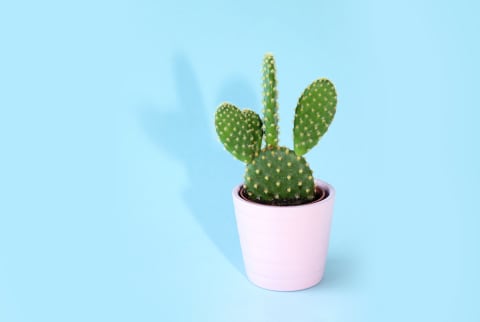Advertisement
Cactus Pear Is Poised To Become A Key Sustainable Crop: Here's Why, According To Experts


Many of the staple crops we grow have a flaw: They're picky about growing conditions, including the temperature, humidity, or location. Those flaws will only become more relevant as our global climate continues to shift.
"Dry areas are going to get dryer because of climate change," explains John Cushman, Ph.D., a professor of biochemistry and molecular biology at the University of Nevada. "Ultimately, we're going to see more and more of these drought issues affecting crops such as corn and soybeans in the future."
Along with his team at the university's College of Agriculture, Biotechnology, and Natural Resources, Cushman just published research on one type of plant that thrives in dry and arid climates and that may be a fantastic source of fuel and food in our world: the cactus.
The untapped potential of cactuses.
Over five years of research, the University of Nevada team investigated how successful different varieties of cactus pear could fare in warm, dry climates. They found that a variety known as Opuntia ficus-indica, also known as prickly pear, produced the most fruit—and used up to 80% less water than other crops to do so.
"Approximately 42% of land area around the world is classified as semi-arid or arid," said Cushman, adding the plant's benefits for the environment are twofold: "There is enormous potential for planting cactus trees for carbon sequestration. We can start growing cactus pear crops in abandoned areas that are marginal and may not be suitable for other crops, thereby expanding the area being used for bioenergy production."
Cactus pear as a food source.
The other, entirely separate, opportunity for cactus cultivation is as a food source, both for humans and animals. While many cultures do eat cactus fruit (and even cactus pads themselves), they are certainly not a key crop in the United States—and that's a missed opportunity.
The fruit of the cactus can be used like many other fruits (it's particularly great in jams because of its natural sugars). A variety of cactus pads may be more familiar in kitchens as nopales, a common ingredient in Mexican cuisine. You can eat the pads fresh or preserve them with canning and pickling methods (once you remove the spines and hairs). Their high water content makes them a good crop for feeding livestock, too.
Cushman began research into cactus pears in 2019 and will continue to do so in new ways, along with a team of researchers. They plan to investigate what it is about the DNA of these plants that makes them so drought-resistant, to see if there may be a way to utilize that genetic information to make other crops more resilient in the face of a lack of water.
Understanding our food in relation to sustainability.
Climate change is going to affect our food systems—in fact, it already is doing so. Making your kitchen sustainable is about more than reusable shopping bags and glass containers; it extends to the foods we buy, too. One of the easiest shifts to make is making sure you limit your food waste by not letting produce waste away in the back of your fridge but instead eating it when it's fresh. Other practices include eating with the seasons, buying local products, and working to make sure your grocery store trips are as sustainable as possible.
If you want to seek out more specific sustainable foods, you can start with options like lentils, tomatoes, broccoli, and peas—and regular trips to the farmers market, too.